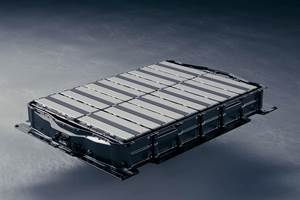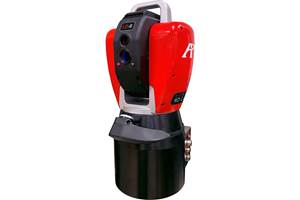Waiting for $5/lb carbon fiber?
HPC editor-in-chief Jeff Sloan suggests we say goodbye to $5/lb carbon fiber and expect that composites will earn their way onto autos by saving drivers money.
The wait for $5/lb carbon fiber is over. That is, you can stop waiting because it’s not coming. That’s the word from CompositesWorld’s Carbon Fiber 2012 conference, which was held Dec. 4-6 in La Jolla, Calif.
For more than 20 years, one of the Holy Grails of the carbon fiber composites market has been the automotive industry. Lighter, stronger and more fatigue- and corrosion-resistant than steel and aluminum, carbon composites would be a perfect fit for primary structures in cars and trucks if it weren’t so expensive and could be fabricated at or near auto industry production rates. Since the dawn of composites time, the auto industry has said, “If only carbon fiber were $5/lb, and if only cycle times were two minutes or less.”
Where and how the demand for $5/lb started is unknown. Speaking at CF 2012, Geoff Wood, CEO of Profile Composites, said he had his first brush with the $5/lb demand in a meeting with Big Three auto executives back in 1989. Whatever its genesis, “$5/lb” has become a mantra mostly by virtue of repetition — and a sort of straw man for some automotive engineers and executives, who, deep down, don’t want to switch to carbon fiber and use the $5/lb threshold as a way to keep the composites industry at bay. Never mind that the demand for $5/lb carbon fiber has persisted despite inflation. If we date the first demand for $5/lb carbon fiber to 1989, inflation alone would have boosted that number to about $10/lb today.
Certainly, hope persists. Consultant Ross Kozarsky, in his Market Trends column this issue (see "Optimizing materials selection in automotive and aerospace structures," under Editor's Picks," at top right.), predicts we’ll yet see $5/lb carbon from a lignin-based precursor in 2017. But at the conference, many carbon fiber manufacturers made clear that they believe $5/lb carbon fiber is not only not within reach but never will be. Despite efforts to find a cheaper, feasible alternative, they say polyacrylonitrile (PAN) is still the precursor of choice. And although the efficiency of the carbon fiber manufacturing process has increased incrementally, that won’t bring a big drop in the price of fiber anytime soon.
What is dropping is mold cycle time. We’ve come a long way since autoclaved prepreg was the only way to go. Teijin says it is fine-tuning a 60-second process for the molding of carbon fiber/thermoplastic parts for automotive applications. Dieffenbacher and KraussMaffei have jointly developed a three-minute part-to-part process to mold carbon fiber/thermoset parts — in use right now by Audi. Quickstep reported at CF 2012 on its efforts to develop Resin Spray Transmission for the high-speed manufacture of automotive parts. And Globe Machine continues work with Plasan Carbon Composites on a high-speed molding process.
What all of this means in the long run remains to be seen. In any case, the argument in favor of carbon fiber’s use in almost every other application has always been focused on something beyond unit cost. Even if an inexpensive precursor were developed, carbon fiber will win the day not because it’s cost-competitive pound-for-pound with aluminum or steel but because it is cost-efficient throughout the vehicle’s lifecycle by vastly increasing fuel-efficiency, prolonging product life and preserving resale value.
That’s how carbon fiber earned such a large presence on the Boeing 787, the Airbus A350 XWB, and other composites-intensive aircraft coming onto the market. In automotive, however, the variables are different: Aircraft are designed to last 30 years, while cars are designed to last about 10; aircraft volumes are typically not greater than 100 a year, while a single car model’s volume is measured in the hundreds of thousands. Thus, you can expect to see a gradual adoption of composites in automotive as carmakers sort out in production vehicles the cost/benefit of carbon fiber to the car buyer.
See the March issue of HPC for a complete report on the Carbon Fiber conference and the fiber’s prospects in automotive, aerospace, wind energy, pressure vessels and more.
Related Content
How is an EV Battery Made?
Everyone talks about batteries, but how are they produced? Here’s the long and short (circuit) of it.
Read MoreNew Laser Technology in Non-contact Optical Dimensional Metrology
LADAR technology from API sets a new standard in non-contact optical dimensional metrology for manufacturing industries.
Read MoreFord Partners With Rockwell Automation to Advance EV Program
The companies will jointly collaborate on assembly tooling designs and architectures that will increase speed to market.
Read MoreSandvik Coromant on Acquisitions: Solutions Entail More Than the Tool
A Q&A with global president Helen Blomqvist explores the cutting tool maker’s acquisition of CAM software companies and how this connects to, among other things, electric vehicles.
Read MoreRead Next
3 Mistakes That Cause CNC Programs to Fail
Despite enhancements to manufacturing technology, there are still issues today that can cause programs to fail. These failures can cause lost time, scrapped parts, damaged machines and even injured operators.
Read MoreThe Cut Scene: The Finer Details of Large-Format Machining
Small details and features can have an outsized impact on large parts, such as Barbco’s collapsible utility drill head.
Read More











.png;maxWidth=300;quality=90)













